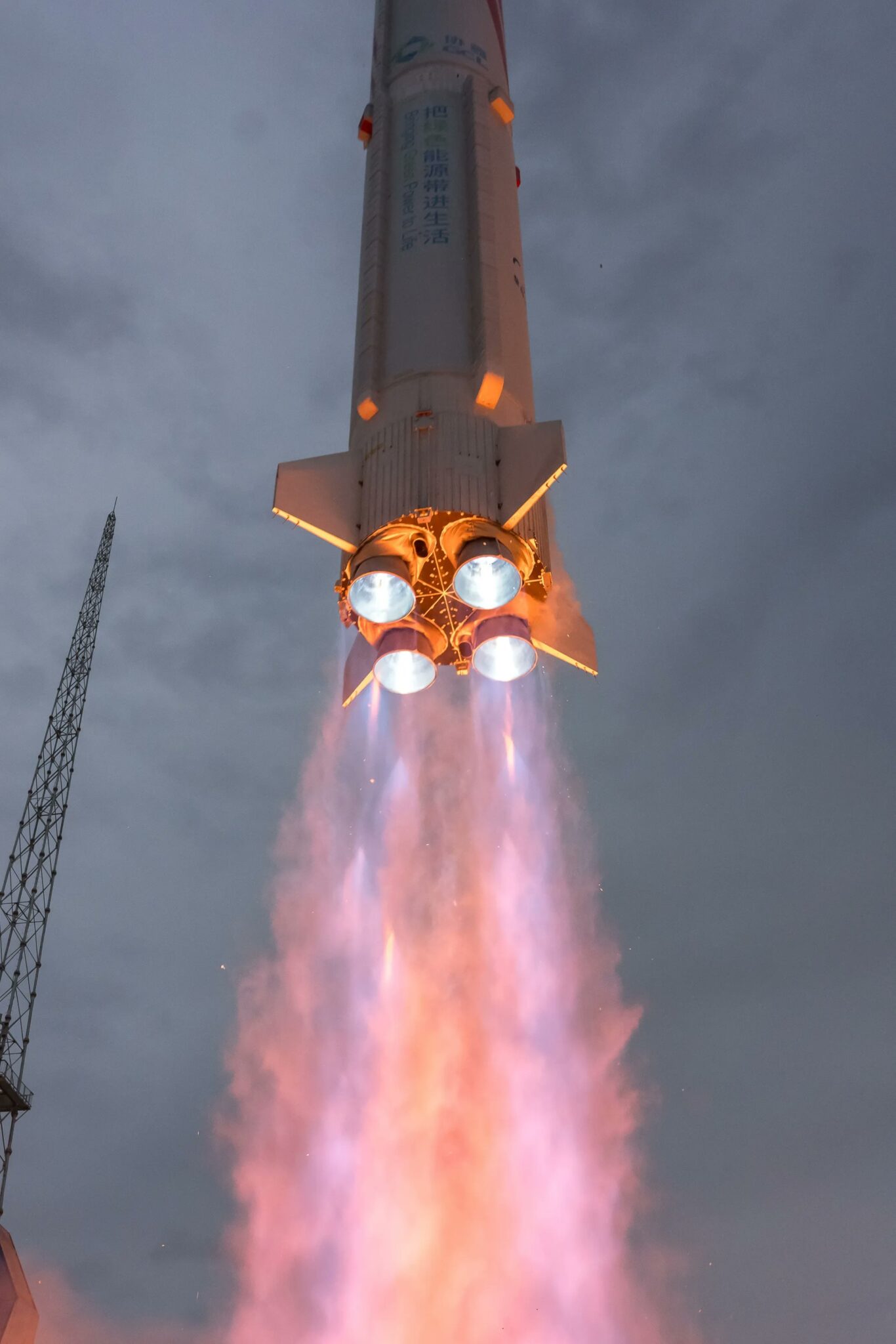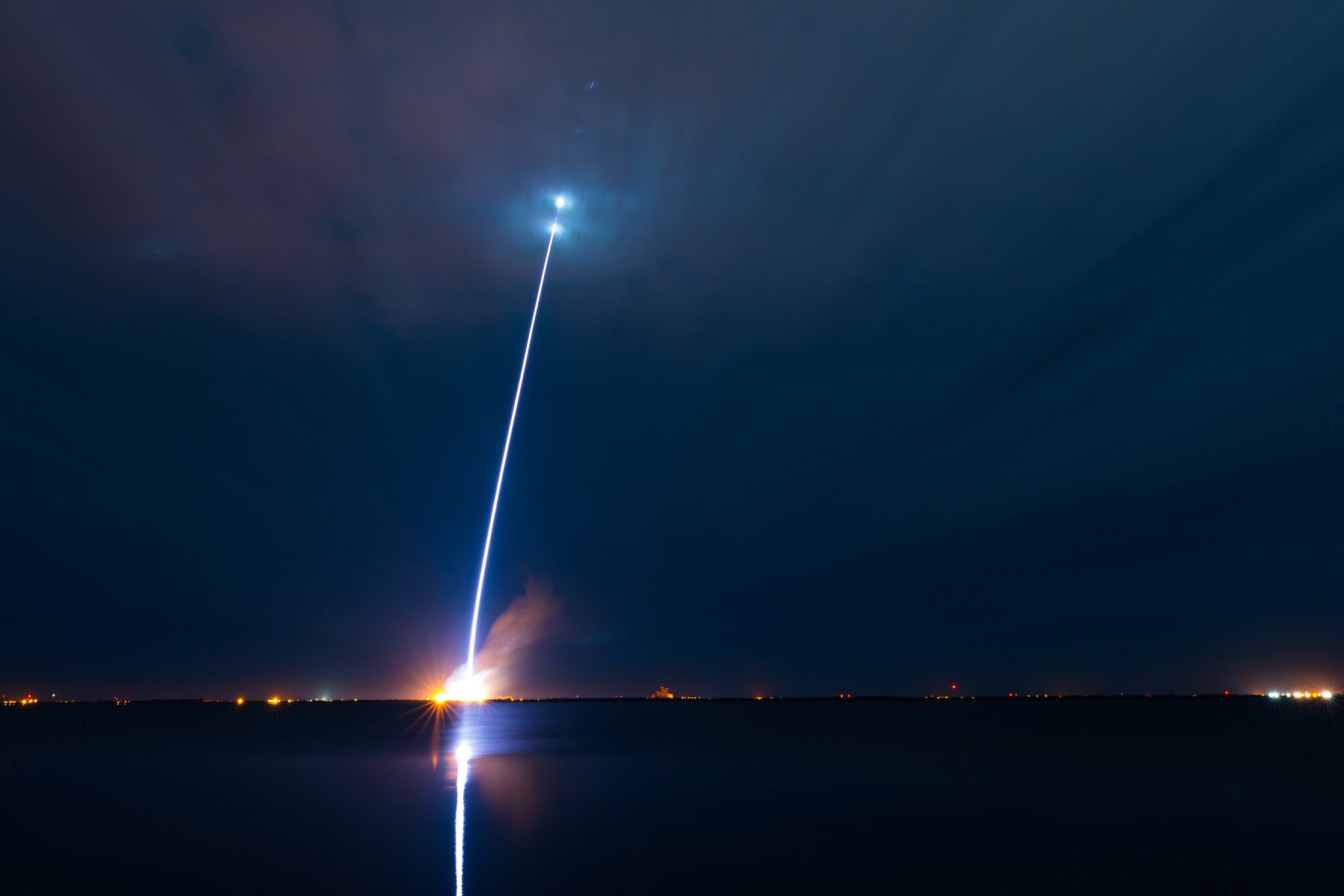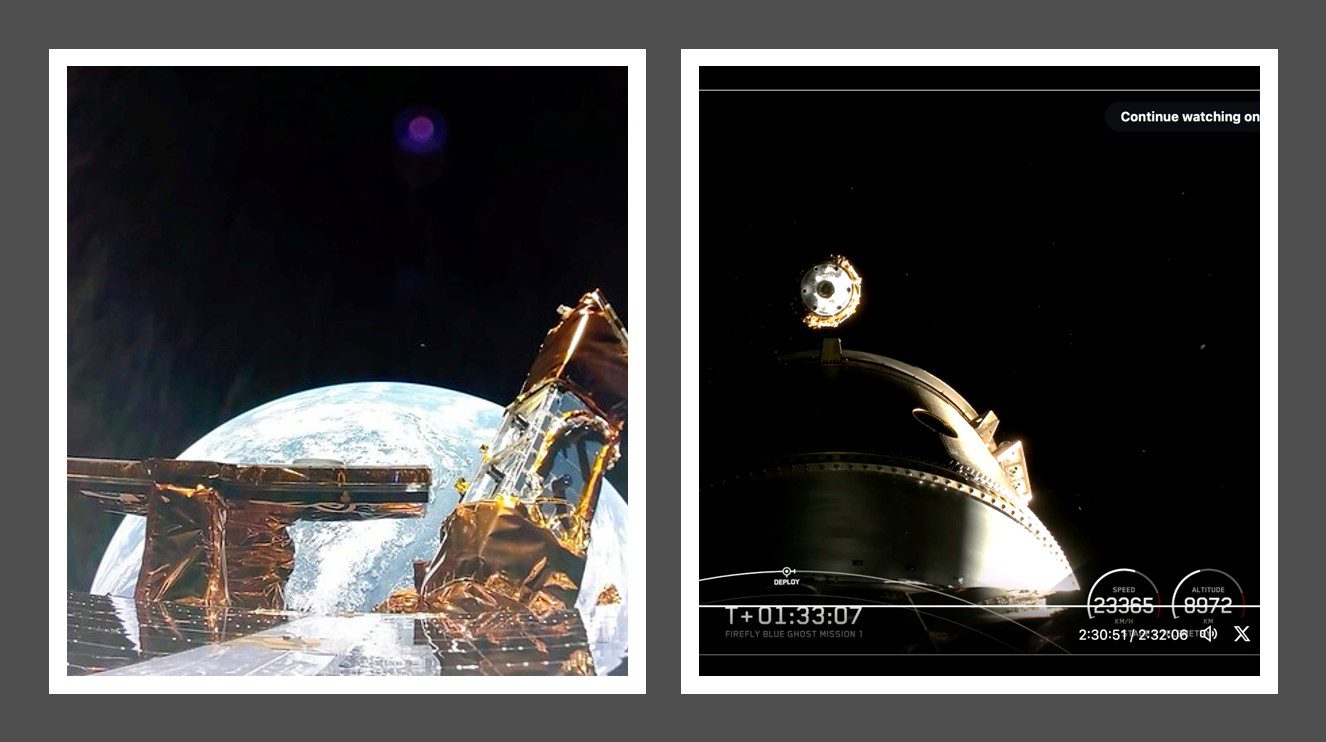While the industry trend is to move to “methalox” – liquid methane/liquid natural gas and liquid oxygen (LOX) as propellants – no rocket using this combination had achieved orbit…until now. The Chinese privately run company Landspace has successfully launched its Zhuque-2 (ZQ-2) rocket after its first flight ended in failure in December last year.
The launch took place at 0100 GMT on 12 July from the Jiuquan launch site located in the Gobi Desert, Inner Mongolia. This time the rocket did not carry any satellite payloads but, instead, had its second stage fitted out as an instrumented test payload. The orbit achieved was 461 x 431 km at 97.3 degrees inclination – equivalent to the Sun-synchronous low Earth orbit used mainly by imaging satellites. The Zhuque-2 rocket can reportedly carry up to 4 metric tons to a 500 km Sun-synchronous orbit

Zhuque-2’s TQ-12 “methalox” engines burn with beautiful plumes on its successful second flight. Courtesy: Landspace
The 49.5 m long two-stage Zhuque-2 rocket has four TQ-12 LOX-methane burning engines, each with a thrust of 657 kN at sea level and 784.5 kN in a vacuum. The upper stage is powered by a single vacuum-optimised TQ-12 with a single TQ-11 vernier thruster. It was the failure of a TQ-11 vernier thruster that caused the maiden flight failure of the Zhuque-2 in December 2022, losing the Zhixing 1B experimental remote sensing satellite plus two other mystery payloads.
The LOX-Methane “methalox” combination is seen as attractive by the industry because it has a relatively good specific impulse – a measure of the efficiency of a rocket per kilogramme of propellant. It also burns (relatively) cleanly with little of the coking issues of LOX/Kerosene combinations. This is important for part reusable rocket designs which the Zhuque-2 is expected eventually to become. While it is not as efficient as LOX/Liquid Hydrogen, methalox does not suffer from the leakage issues that liquid hydrogen has or need as low a cryogenic temperature to maintain a liquid state, nor does it require as much tankage (methane is denser than liquid hydrogen).
Consequently, the next generation of rockets, including the United Launch Alliance (ULA) Vulcan, Blue Origin’s New Glenn and the SpaceX Starship/Super Heavy combination, all use it, as does Rocket Lab’s new Neutron launch vehicle and the Relativity Space Terran1/Terran R family. Apart from the Zhuque-2 flights, the only other methalox orbital attempts so far have been the maiden launch of the Starship, which failed before stage separation, and Relativity Space’s smaller Terran-1 rocket, which failed due to a second-stage engine valve issue.
As it is, the BE-4 powered methalox rockets may be delayed. CNBC revealed that a Blue Origin BE-4 rocket engine, which was initially destined to be on an ULA Vulcan launch, exploded during a test firing in Texas on 30 June. This will be a setback to both companies as Blue Origin intends to fly the BE-4 design on its New Glenn series.
https://twitter.com/CNSAWatcher/status/1679038514720120832






